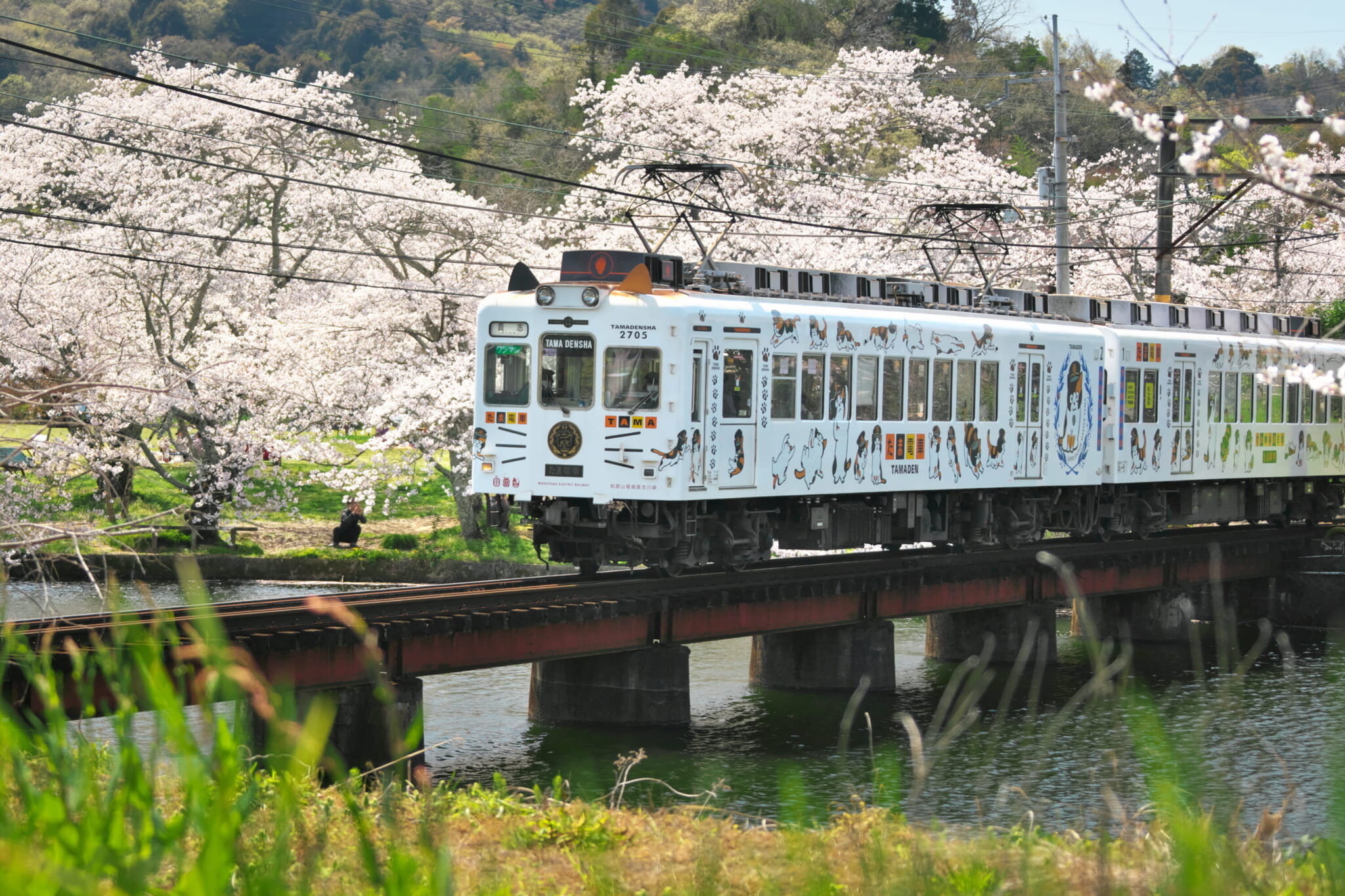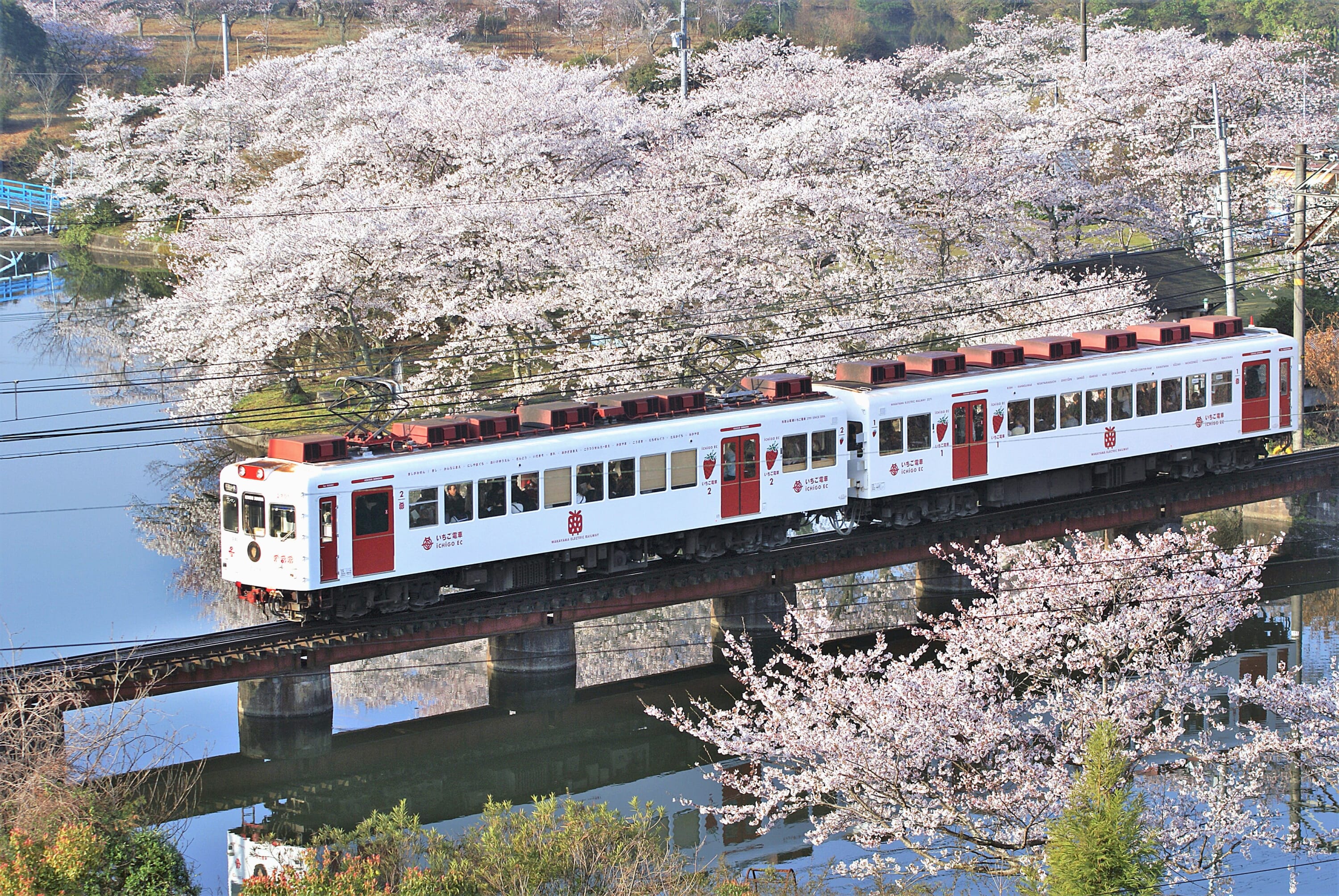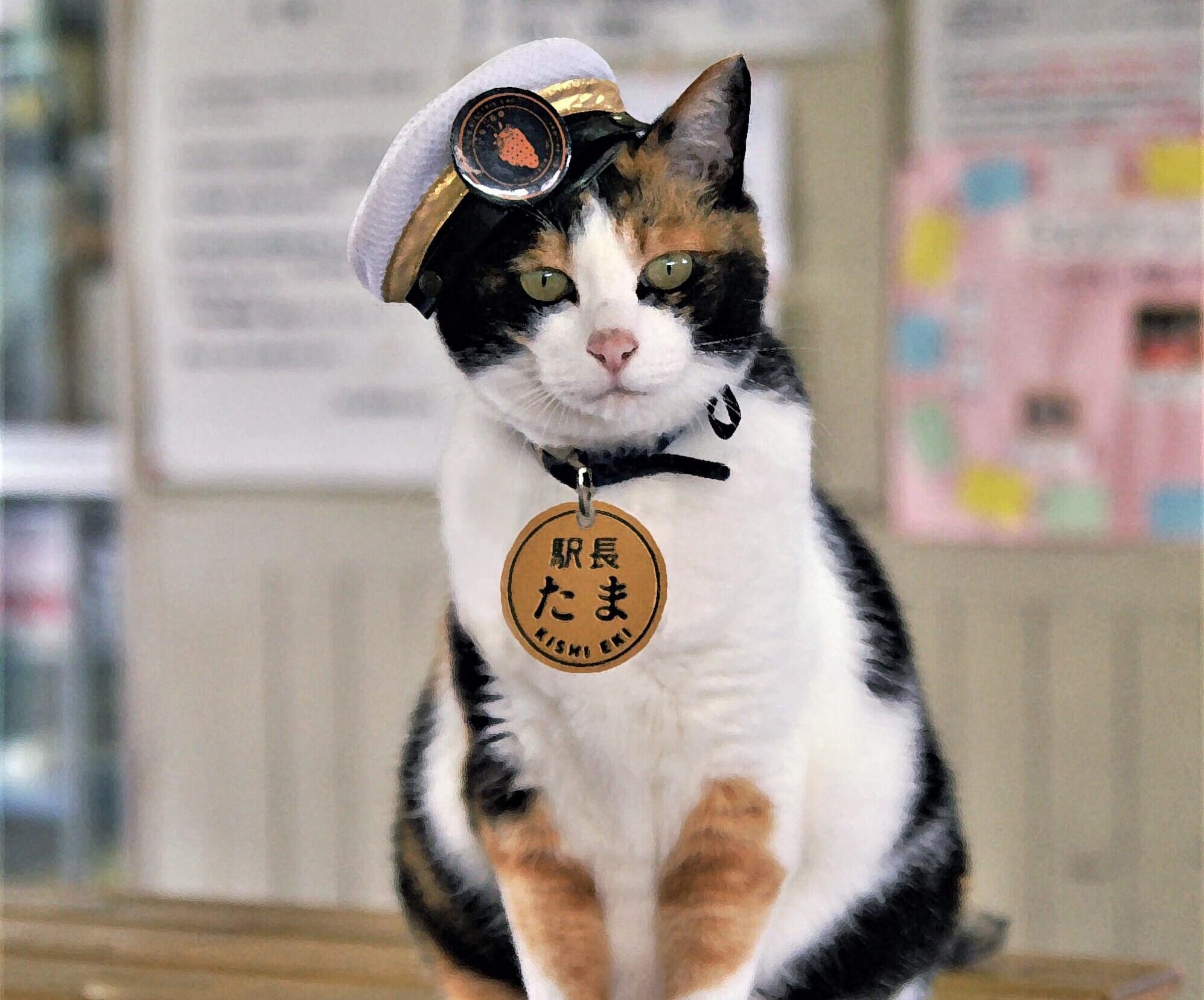
The adorable cat conductor of the Tama Den line.
Tama Den
She’s known as the cat that saved a railway. Tama was Kishi Station’s friendly resident calico until the railway operator named her the stationmaster in 2007. That designation — the first for a cat in Japan — came with a custom-fitted hat and brought Tama national feline fame. Soon, visitors were flocking to this 14-kilometer line linking rural communities to Wakayama city. The influx rescued the Kishigawa line from the brink of extinction.
Tama passed away in 2015 but not before the railway operator (now called Wakayama Electric Railway) had rolled out its Tama Den train with a cat-themed livery: whiskers on the front car, cat-shaped seat backs, paw prints on the floors, shelves of cat books and illustrations of calico cats plastered everywhere. Kishi Station, the last of the line’s 14 stops, now has a gift shop, museum, cafe and two new feline bosses, Nitama (Tama II) and Yontama (Tama IV).
Medetai Densha
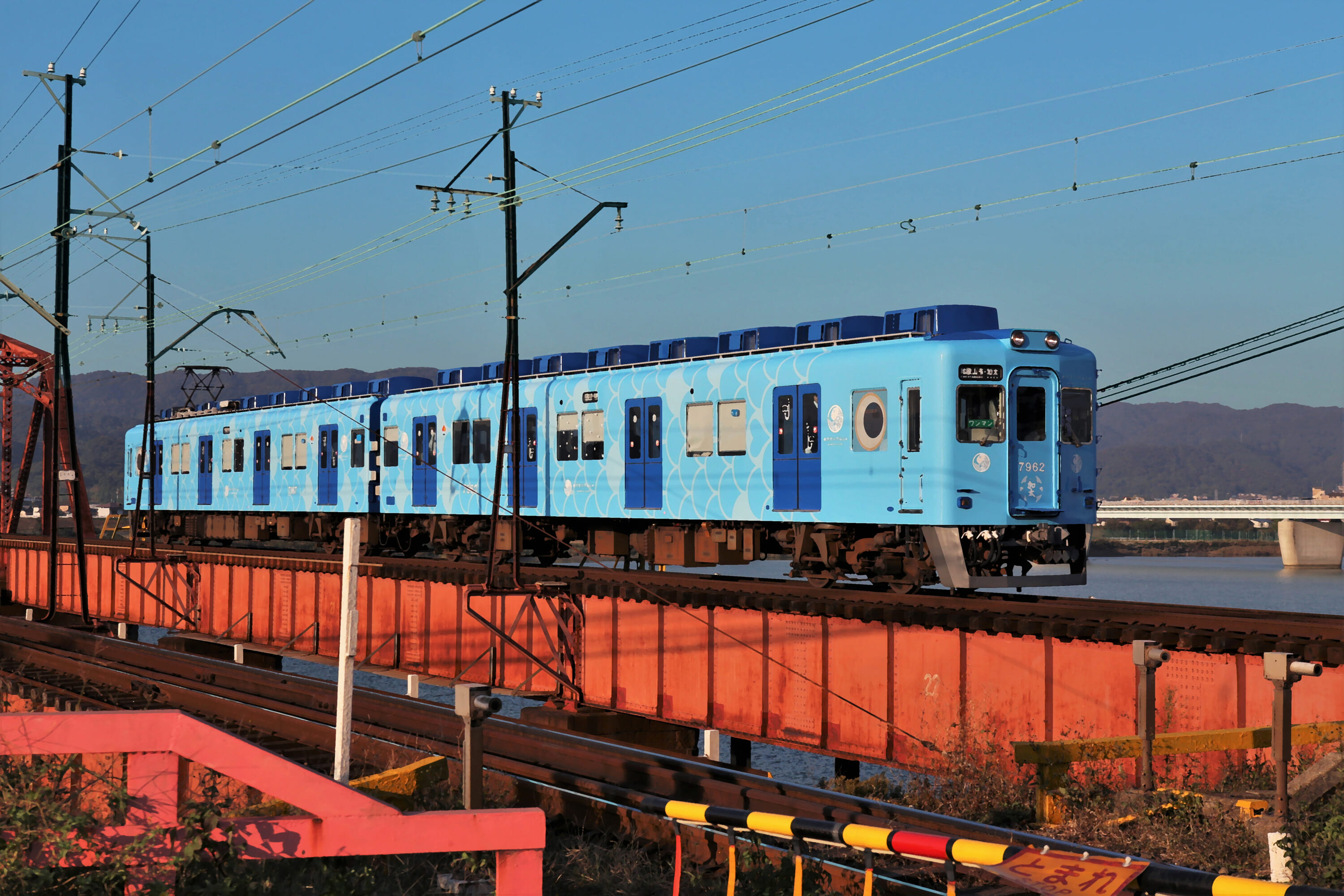
The Medetai Densha crossing a bridge.
Trains masquerading as fish make the rounds on Nankai Electric Railway’s 12-kilometer, seven-station Kada Line, near the fishing ports and beaches at the northwestern edge of Wakayama Prefecture. The railway says its Medetai trains — a play on words that means joyous but also a nod to the region’s impressive catch of red sea bream in March and April — are meant to give passengers the feeling of being under the sea as they cover the 12-kilometer stretch between Wakayama Station and Kada Station.
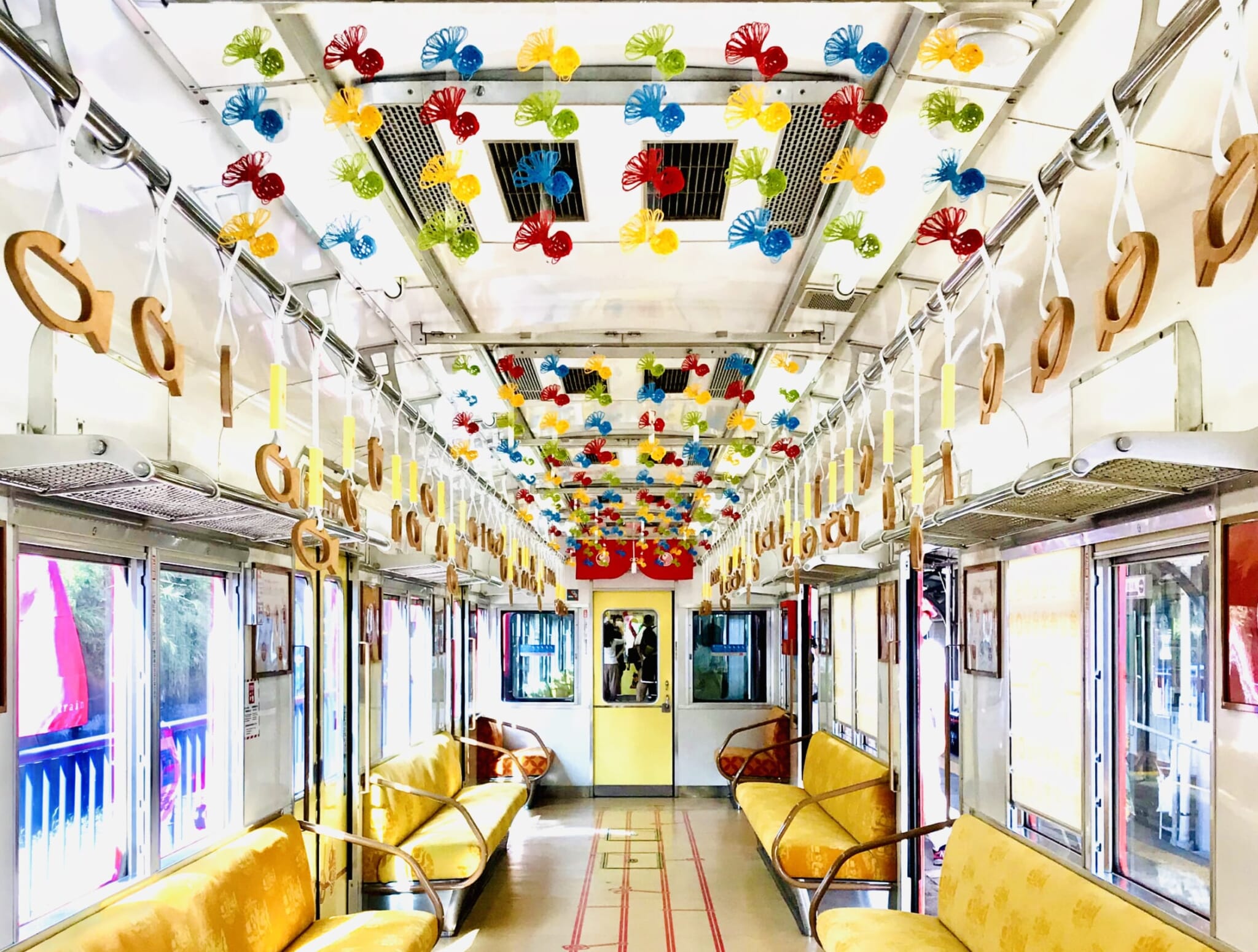
A look at the cute interior of the Medetai Densha.
The trains’ sea life motif extends to the ceilings, seat covers, floors, windows, shades and dangling handles, and varies with each of the four versions (in shades of pink, sky blue, red and black).
Ichigo Densha
There are many ways of traveling to Wakayama’s strawberry farms during the January-to-April picking season. By far the most festive is Wakayama Electric Railway’s Ichigo Densha (Strawberry Train). The two-car local debuted on the Kishikawa Line in 2006 with wooden benches and tables and strawberry-decorated upholstery, and was the first of the railway’s themed trains — there are now five — created by designer Eiji Mitooka, who also dreamed up the luxury sleeper train Seven Stars in Kyushu.
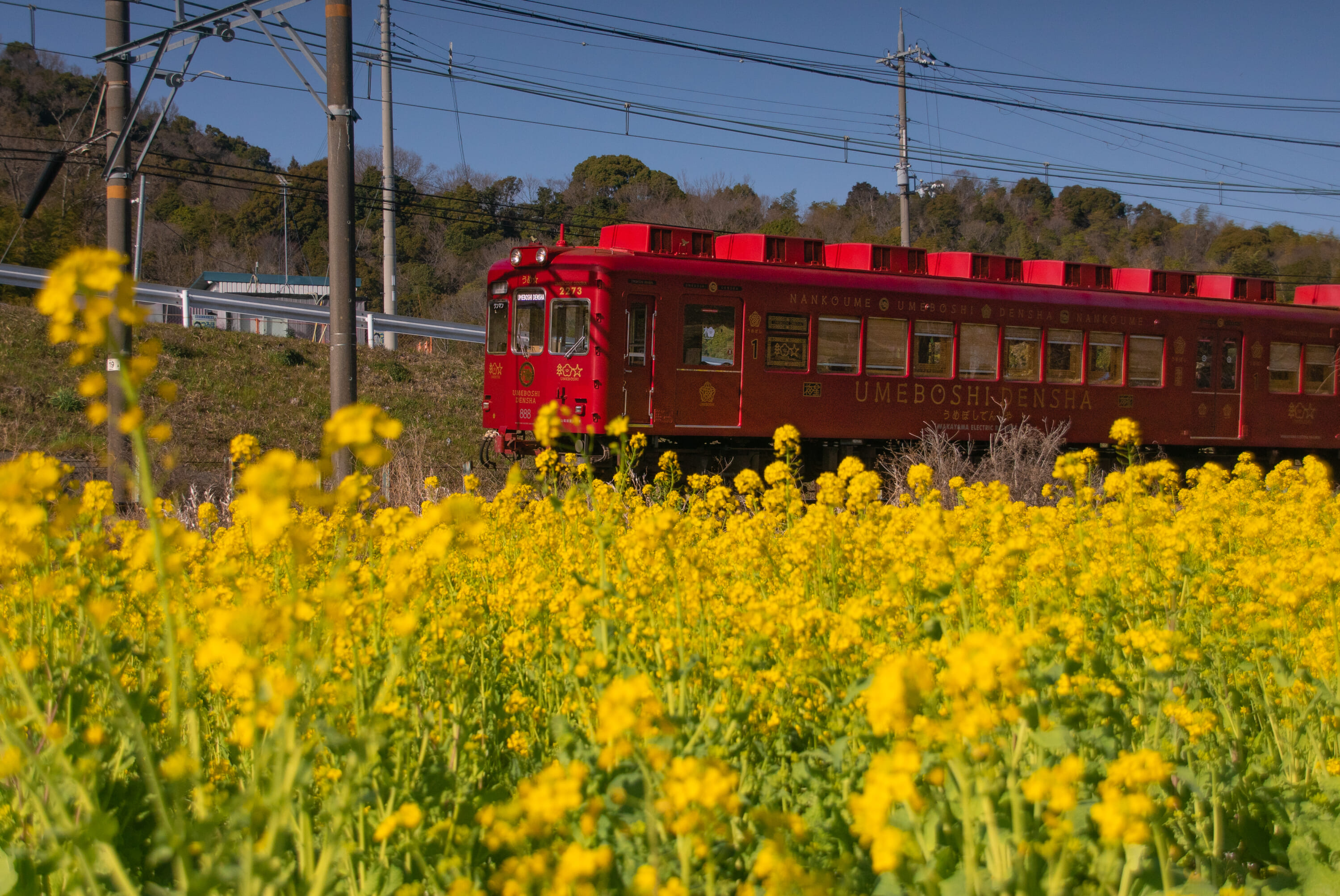
The umeboshi densha in Wakayama going through a field of flowers.
Umeboshi Densha
Mention Kishu — the former name for Wakayama — to people in Japan and you’ll likely hear about the region’s delightfully sour umeboshi, or pickled plums. According to local lore, Kishu’s farmers struggled to grow much until a feudal lord suggested that they plant ume trees. Today, Wakayama’s orchards produce more Nanko plums for umeboshi than any other prefecture, and the Wakayama Electric Railway’s Umeboshi Densha train on the Kishikawa Line pays tribute to this mainstay of the region’s agricultural economy. Vibrant scarlet on the outside, the train, designed by Eiji Mitooka, features wooden benches, washi-covered ceilings and elaborately patterned kumiko woodwork window frames.
Panda Kuroshio
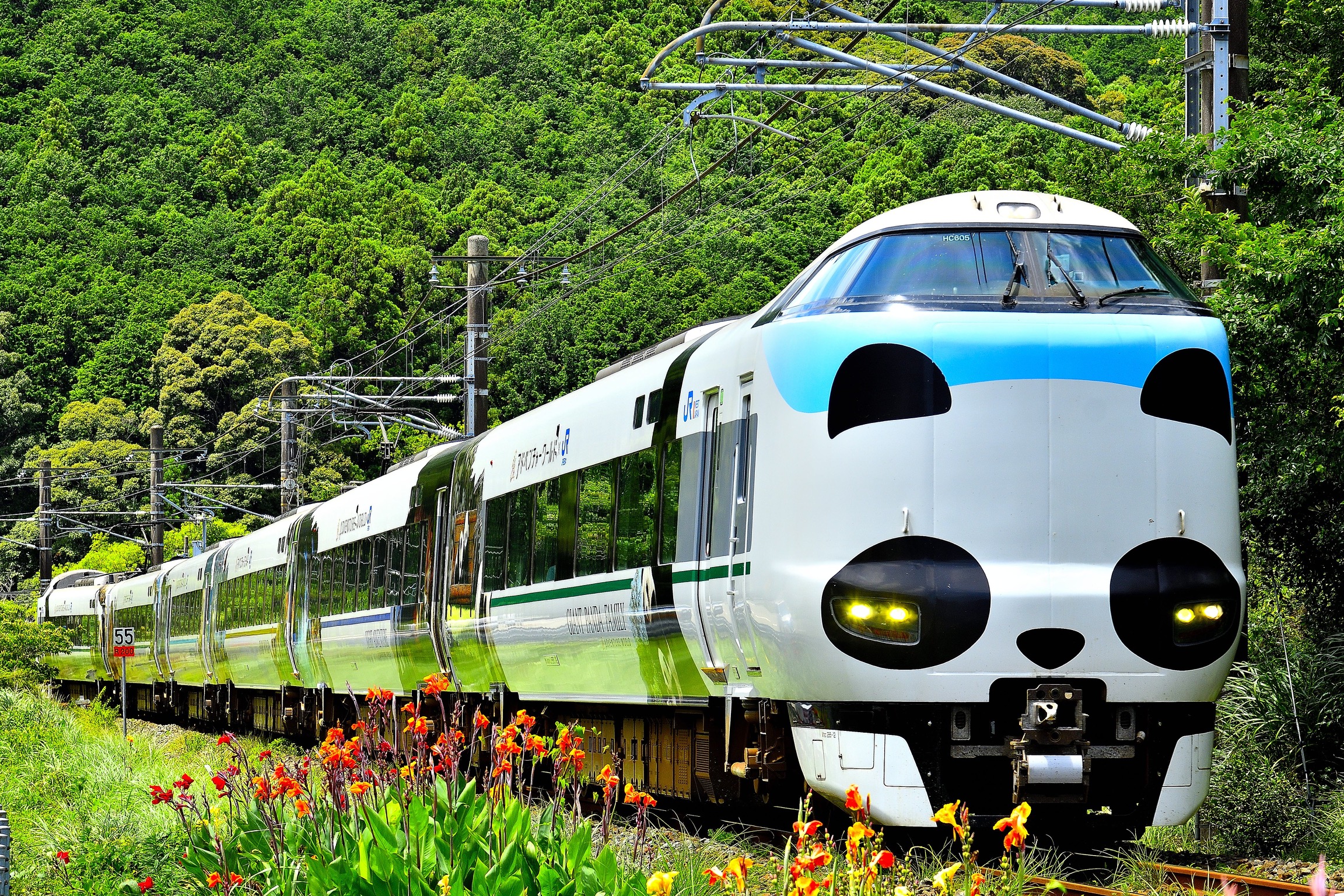
The Panda Densha
Rauhin, Yuihin, Saihin and Fuhin are the biggest family of giant pandas in Japan and the hands-down fan favorites at Adventure World, a zoo and marine park in Shirahama, Wakayama Prefecture. Their likeness is also on a train: Since 2017, West Japan Railway (JR West) has promoted these lovable black-and-white fuzzballs with its Panda Kuroshio limited express.
The trains have a panda face on the front car and illustrations inside on headrest covers and sliding doors, and passengers are treated to a two-and-a-half-hour scenic ride along the coast of the Kii Peninsula as they shuttle between Shin-Osaka and Wakayama’s Shirahama Station, near Adventure World. JR West calls the newest of its three Panda Kuroshio trains the Sustainable Smile Train because it promotes the UN Sustainable Development Goals — or maybe it’s because all the passengers are so happy to be on board.

